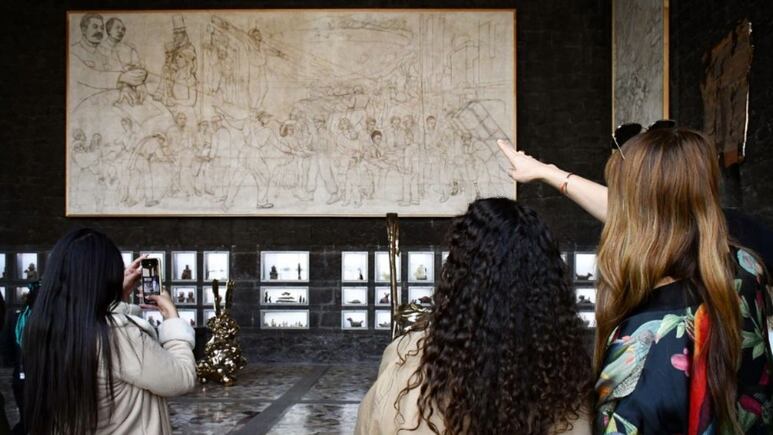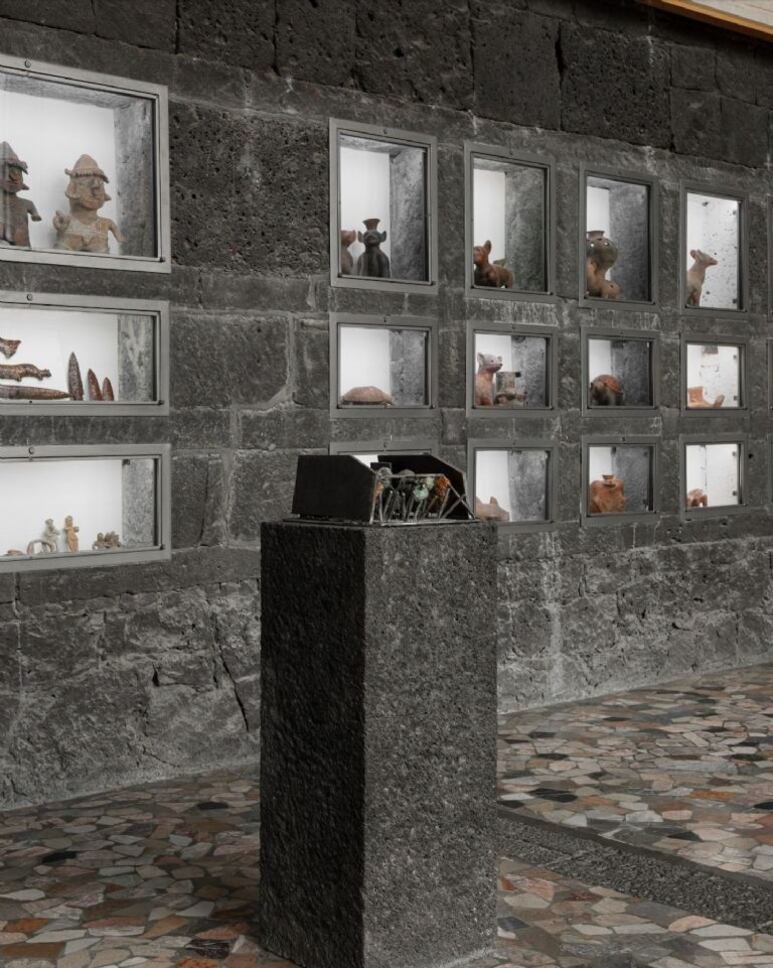Museo Diego Rivera Anahuacalli: A Space for Contemporary Art and Mexican Traditions

In 2024, the Museo Diego Rivera Anahuacalli celebrates its 60th anniversary, solidifying its status as a vibrant and dynamic space where contemporary art and Mexican traditions constantly converge. Since its inauguration in 1964, the museum has served as a center of artistic experimentation, reflecting Diego Rivera's vision.
Publicidad
Located in the rocky landscape of Coyoacán, in the southern part of Mexico City, the museum offers visitors a unique multisensory experience. It is not just a place to observe art but to feel, live, and connect deeply with Mexico's cultural roots. The museum, whose name in Nahuatl means "house surrounded by water," was envisioned by Rivera as a space for the harmonious coexistence of tradition and modernity.
The Anahuacalli stands out for its extensive collection of pre-Hispanic art and its singular architecture, built from carved volcanic stone extracted from the site itself. The building's polyformic architecture, inspired by pre-Hispanic structures, blends Aztec, Mayan, and Toltec influences, resulting in a unique style that Rivera defined as an amalgamation of elements with his distinctive touch.
The museum's history dates back to 1942, when Rivera began constructing it in the village of San Pablo Tepetlapa, then on the outskirts of Coyoacán. His goal was to create a space to house his collection of pre-Hispanic art, a passion he had developed since childhood. In 1941, after returning to Mexico from several years in Europe, Rivera chose the Pedregal de San Ángel for his museum. The land, shaped by the eruption of the Xitle volcano, provided the necessary construction materials.
Publicidad
The building was designed as a museum and a space for artistic creation and exchange, where various art forms (theater, dance, painting, and music) could flourish. The architecture adheres to the organic architecture ideal of integration with nature, conceptualized by Frank Lloyd Wright. Rivera sought a balance between the pre-Hispanic and the modern, creating a space reflecting Mexico's essence through its pre-Columbian past. After his death, architects Juan O'Gorman and Ruth Rivera Marín (Diego's daughter) completed the ambitious project.
Publicidad

To celebrate its 60th anniversary in 2024, the museum has organized various events and activities. These include issuing a commemorative postage stamp in collaboration with the Mexican Postal Service. Another eagerly anticipated event is the Second Maize and Cacao Gastronomic Festival, held in collaboration with Cacao para Todos and the Mexican School of Gastronomy. This festival features tastings of typical Mexican dishes, talks, and an artisanal market.
Additionally, a series of conferences on the social and architectural impact of the Anahuacalli will be held, with Dirk Denison and Sandra Barclay, members of the Mies Crown Hall Americas Prize, participating. They recently recognized the museum's architecture and social mission and will offer in-depth insights into its influence on the community and Mexico's cultural landscape.
The museum will also celebrate its living memory with a book presentation and organize various festivals that highlight the place's natural and scenic wonders, such as Mutek, an electronic music and digital arts festival; the inauguration of the Day of the Dead altar; the Cacao Festival; and the presentation of the collective memories of the Anahuacalli, a project collecting the historical memory of the museum's neighbors.
The Anahuacalli is more than a building: it is a fusion of culture, architecture, and art, a center that aims to inspire and benefit the community.
The museum is at Museo 150, Col. San Pablo Tepetlapa, Coyoacán. It is open Tuesday through Sunday from 11:00 a.m. to 5:30 p.m. Admission is 80 pesos for nationals and 100 pesos for foreigners.
Publicidad
Publicidad
Más Leídas | Heraldo USA
¿Muerte en el elenco de “El Chavo del 8″? Mhoni Vidente lanza triste predicción
Por Heraldo USA
Emiten alerta en Tokio por torrenciales lluvias; se esperan inundaciones desastrosas
Por Heraldo USA
La POLÉMICA reacción de Dana Arizu a supuesta infidelidad de Alex Montiel 'Escorpión Dorado'
Por Heraldo USA
¿Tienes alguno de estos 10 apellidos? Es muy probable que tus antepasados sean asiáticos
Por Heraldo USA
Publicidad
Más noticias de Diego rivera
Más noticias de México









